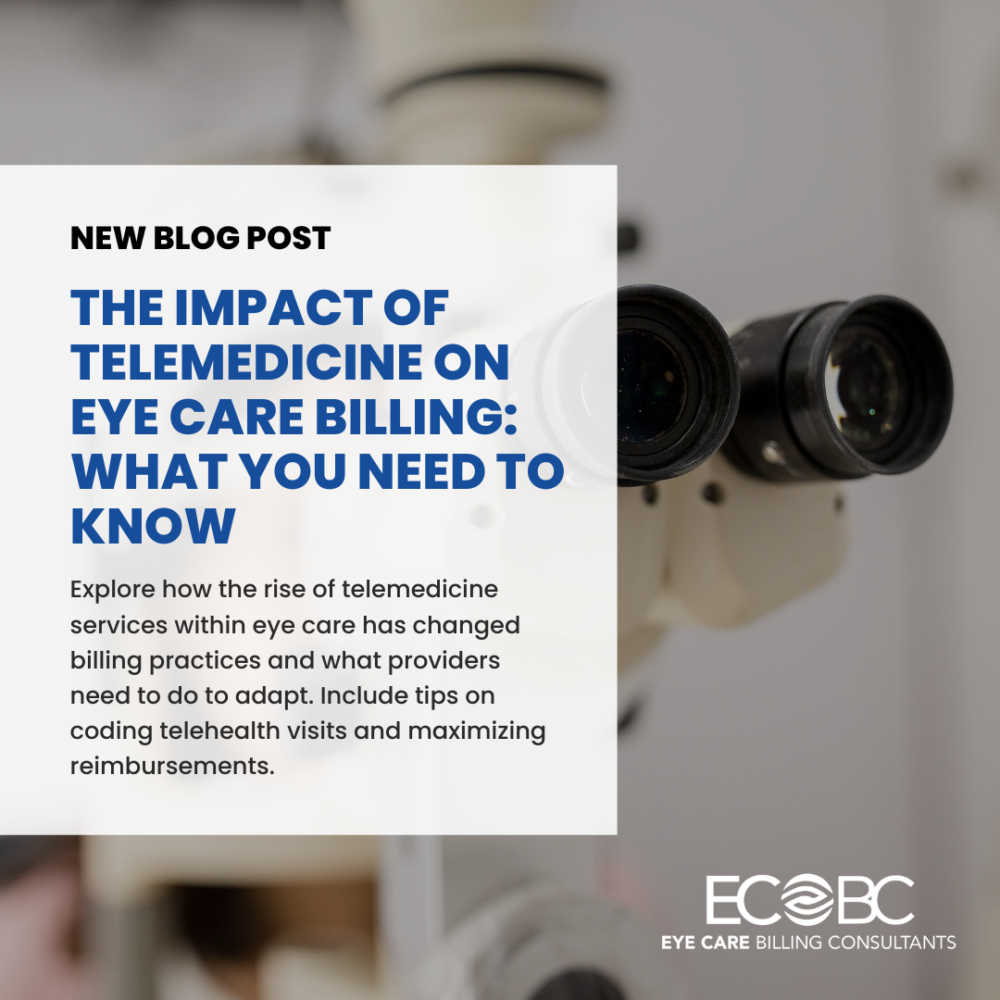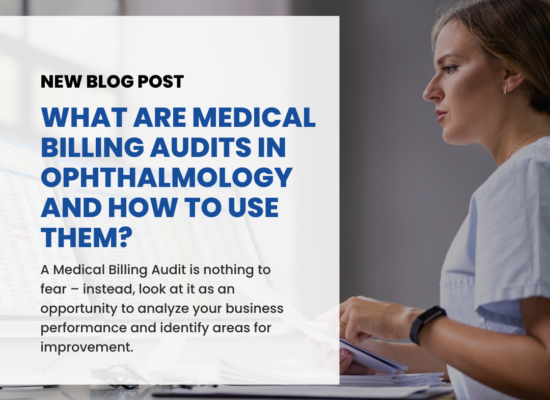Thanks to rapid technological advances, telemedicine has become a booming field that is expected to grow to include all areas of healthcare. It’s never been easier to provide healthcare services remotely using telecommunications technology like live video calls, phone calls, secure messaging, databases, and the transfer of high-resolution images and video. As telemedicine evolves, so does the billing and coding field, and providers need to be ready to adapt to these changes.
From a patient’s point of view, telemedicine means improved access to care and overcoming barriers such as geographic distance, mobility issues, or lack of transportation. Because it allows the diagnosis, consultation, treatment, and monitoring of patients from a distance, this translates to cost savings and increased efficiency. Patients can also reach eye care specialists who may be far away. All of this translates to more opportunities for patients to expand the scope and quality of their eye care.
For ophthalmologists, telemedicine can potentially expand patient reach, increase earnings, and even reduce costs. Telemedicine can streamline eye care delivery by allowing you to see more patients in less time, regardless of their location, and reducing the need for physical facilities and staffing. Integrated IT systems make it easier to monitor patients and even enable early intervention. Telemedicine will no doubt continue to become an important tool for ophthalmologists in providing more areas of care for patients.
Here are some of the ways that telemedicine can be integrated into your practice:
- Virtual Consultations to evaluate eye health concerns, including reviewing symptoms, medical history, and diagnostic images sent virtually
- Remote Acuity Testing to perform basic vision tests under the guidance of an ophthalmologist
- Remote Monitoring of patients with chronic eye conditions, such as glaucoma or diabetic retinopathy, using digital imaging and remote monitoring devices
- Emergency Eye Care in situations where patients have experienced an eye injury, sudden vision changes, or urgent eye conditions but lack immediate access to an ophthalmologist
- Pre- and Post-operative Care for patients undergoing eye surgery, including discussing surgical risks and benefits, reviewing postoperative instructions, and monitoring healing progress
- Chronic Disease Management, including the monitoring and management of chronic conditions, can lead to better outcomes and reduced healthcare costs associated with complications or hospitalizations
Going forward, ophthalmologists will need to be adept at using the correct billing codes for eye care telemedicine services. Billing and coding specialists like Eye Care Billing Consultants stay updated with regulatory changes and new coding and billing practices developments. Some of the most commonly used ophthalmology telemedicine billing codes include those for:
- remote consultations and evaluations
- telemedicine eye exams
- assessment of ocular health
- evaluation of eye-related symptoms
- remote monitoring and interpretation of diagnostic tests, such as retinal imaging or intraocular pressure measurements
- interpretation of diagnostic tests
- telephone consultations or online communication
It’s important for ophthalmologists to familiarize themselves with the specific billing requirements and guidelines of their payer(s) when submitting claims for telemedicine services. Documentation of the services provided, including the mode of communication (phone, email, video, etc.), patient consent, and medical necessity, is essential for accurate billing and reimbursement. Additionally, ophthalmologists should stay informed about updates to telemedicine billing codes and regulations to ensure compliance with evolving standards.




